Magnesium sulfate, belonging to Epsom salt, has gained attention from many gardeners. This mineral is argued to improve flower and fruit production, enhance plant growth and reduce common deficiencies. Nevertheless, the use of Epsom salt in gardening has been controversial. In this article we explore the science behind using Epsom salt in your tomato garden and whether it actually does anything for you or is just a myth of horticulture. We will look into how magnesium and sulfur help plants stay healthy through an analysis of practical, test-based agricultural studies so that by the end you will have a good understanding before you decide on ways to go about your farming activities.
What is Epsom Salt and Why Use It in the Garden?
Epsom salt is a naturally occurring mineral consisting of magnesium and sulfate, both vital elements in plant nutrition. Plants need magnesium for chlorophyll, which helps them make food from sunlight. It also assists in the uptake of other key nutrients. Sulfur completes plant proteins and enzymatic processes. In the garden, Epsom salts are used to alleviate magnesium deficiency, often showing up as yellow leaf with green veins, as well as encourage robust growth and higher yields. Although research on its effectiveness has produced mixed results, many gardeners have reported positive outcomes hence making Epsom salts popular supplement in tomato farming. Nonetheless, it is important to apply it carefully because overuse can cause nutrient imbalances and harm plants.
Understanding Epsom Salt: Magnesium and Sulfur
Magnesium is an essential element involved in various physiological and biochemical processes in plants. Being the central constituent of chlorophyll molecule makes it indispensable for photosynthesis; whereby plants convert light energy into chemical energy. Besides, magnesium plays vital roles in protein synthesis; nucleic acids formation; enzyme activity regulation etc.The normal range of soil Mg concentration varies between 25-50 ppm depending on soil type and particular crops grown.Symptoms of Mg deficiency generally include interveinal chlorosis where the area between leaf veins becomes yellow while the veins remain green.
Sulfur on the other hand is responsible for amino acids’ production thus proteins as well as some vitamins like thiamine or biotin.Its functions include nitrogen fixation process or chlorophyll synthesis.Optimal sulfur levels in soil are typically between 10-30 ppm.Thus sulfur deficiency would be expected if all leaves turn yellowish since such affected plants exhibit quite even yellowness of leaves.
For this issue, there is a general recommendation that Epsom salt should be used through drenching of the soil or as a foliar spray. The typical application rate is 1 tablespoon per gallon of water for soil drenching and 1 teaspoon per gallon of water for foliar application. However, these rates should be adjusted based on soil test results and specific crop needs to prevent excessive accumulation, which could lead to nutrient imbalances, such as calcium and potassium deficiencies, or even toxicity.
Benefits of Epsom Salt for Plants
Magnesium sulfate, commonly referred to as Epsom salt when used in relation to agriculture has multifaceted benefits on plant health and growth. Correcting magnesium and sulfur deficiencies are among the key advantages that boost physiological and biochemical processes in plants due to their significance. Epsom salt provides plants with magnesium that promotes chlorophyll productivity, thus enhancing photosynthesis efficiency. This eventually leads to more robust growth with increased yield. Sulphur forms essential proteins and vitamins since it is part of amino acids, enzymes; hence enhances the general plant strength.
Critical application rates are given for technical specifications. This is usually effective for soil drenching by using 1 tablespoon of Epsom salt per gallon of water. However, when it comes to foliar sprays, 1 teaspoon of the substance is enough in a whole gallon of water. These doses help to supply adequate nutrients to plants without any toxicity or nutrient imbalance. These application rates should be adjusted based on the soil tests and specific crop requirements for optimum efficiency Soil test may indicate that magnesium content is less than 25 ppm which may call for use at the highest end of this range Conversely, adjustments similar to those mentioned above should be considered if sulfur level falls below 10-30 ppm
Moreover, other symptoms like interveinal and overall chlorosis can be mitigated through applying Epsom salt, hence improving plant aesthetics and health accordingly. Therefore, knowing how and when to apply Epsom salts based on soil test results and crop needs would greatly enhance plant performance and productivity.
Why Use Epsom Salt for Tomato Plants?
Epson salts contain magnesium and sulfur that are beneficial to tomato plants, among other crops, because they play a major role in their growth and fruit production, respectively. In addition, magnesium proves vital in photosynthesis since it forms part of (is an integral component) the chlorophyll molecule thus increasing the energy producing ability of plants The synthesis proteins while other enzymes require sulfur which provides enhanced general healthiness coupled with resistance against diseases in all kinds of plants This can prevent such deficiencies related to tomatoes as yellow leaves along with weak fruit set that eventually lead to better yields with healthier plants Epson salt properly used will ensure that nutrient uptake by tomato plant becomes optimal so as attain maximum productivity
How to Use Epsom Salt for Tomato Plants Effectively?
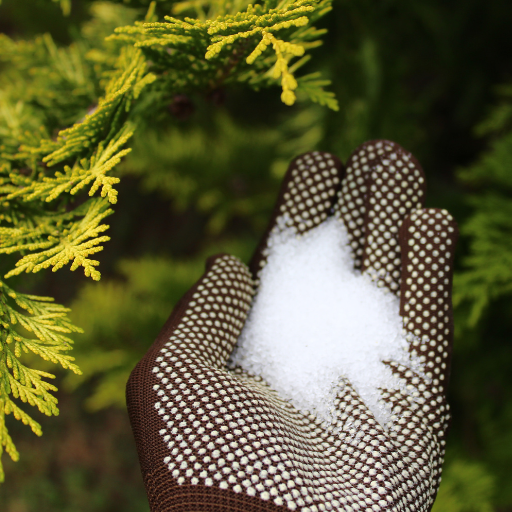
In order to use Epsom salt effectively in growing tomato plants, one must observe exact application techniques. It is recommended that foliar spraying be used with this method; mix a gallon of water with one tablespoon of Epsom salt, then spray directly on the leaves of the tomato plant after every 14 days. This type allows fast absorption of magnesium and sulfur. Additionally, applying Epsom salt by soil drenching is possible if you dissolve between one and two tablespoons into a gallon of water to pour at the base of each plant. This should be done every month so as to have continuous availability of nutrients necessary for growth. A third process involves amending planting beds with Epsom salt before planting, which requires mixing about 1 cup granulated Epsom salt per 100 square feet. Such approach can create good conditions for the growth of tomato plants by making soil rich in nutrient elements in anticipation for their taking up by plants. To properly adjust rates and frequencies, keep track on soil nutrient levels as well as plant health.
The Right Approach When Adding Epsom Salt
There are several best practices when including Epsom salts in your tomato plant care routine that will ensure optimum results.Firstly always do a soil test before adding any magnesium or sulfur containing substances to determine present levels.This prevents overapplication which may lead to imbalances and potential toxicity.Secondly, follow the recommended dosage: while foliar spray should be one tablespoon per gallon of water, bi-weekly, soil drench applications range from one to two tablespoons per gallon of water monthly.Thirdly, before setting tomatoes into the ground, mix into its top layer slightly less than 1 cup per 100 sqft.Thus pre-treating planting area could help establish a nutrient-rich environment conducive towards tomato plants’ development.
For precise nutrient management, it is crucial to monitor the plants regularly for signs of deficiency such as yellowing leaves or poor fruit set, and adjust the application accordingly. Ensure the foliar spray is applied during cooler parts of the day, ideally early morning or late afternoon, to avoid leaf burn. Lastly, always use Epsom salt that is labeled as safe for agricultural use to avoid contaminants that could harm your plants. Consistent application following these guidelines can significantly enhance the health and productivity of your tomato plants.
How Much Epsom Salt Per Plant?
For an established tomato plant dissolve 1-2 tablespoons of Epsom salt in a gallon of water and apply this solution at its base once per month.Additionally,pouring one tablespoon of this substance into the hole before planting gives vital nutrients to young roots.Also,a foliar spray may be made by dissolving one tablespoon of Epsom salt in one gallon of water then using it twice weekly as fertilizer.This should be adjusted once you notice some changes in either condition.
Using Epsom Salt During Different Growth Stages
Seedling Stage: Adding Epsom salt to the care regimen during seedling stage can enhance early root development and promote chlorophyll production. A recommended method is dissolving 1 table spoonful of this product in a gallon of water, which should be used to water seedlings at least once each month. This can help strengthen young plants, leading to good growth during their initial stages.
The plants, which are now in the vegetative stage, require a lot of nutrition, to sustain rapid leaf and stem growth. For example, one can make a foliar spray by dissolving one tablespoon of Epsom salt in a gallon of water and apply it biweekly at this stage. The method therefore guarantees that magnesium and sulfur are perennials for photosynthesis and general plant health.
Flowering Stage: Consistent magnesium levels are critical during the flowering period because they dictate flower development and subsequent fruit set. It is advisable to continue with monthly soil drenching using one or two tablespoons of Epsom salt per gallon of water. The steady supply ensures that there is enough energy for flowering and prevents blossom end rot.
Fruiting Stage: As the plants enter the fruiting phase, the demand for Mg increases greatly due to the high energy necessitated in fruit formation and ripening. Again, during this period, monthly soil drenches should be applied with one or two tablespoons of Epsom salt per gallon of water. Moreover, weekly foliar sprays may be beneficial in providing an instantaneous nutrient boost, thus ensuring healthy fruit development.
These practices based on technical parameters such as specified concentrations and application frequencies dovetail fully with what authoritative horticultural materials suggest making them effective as well as lawful.
What are the Signs That Tomatoes Need Epsom Salt?
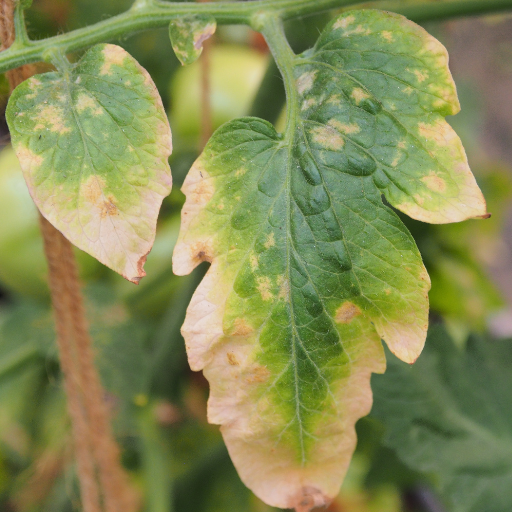
Indications that your tomato plants may be in need of Epsom salt typically encompass yellow leaves with green veins, slow growth, and weak stems which indicate a deficiency of magnesium. Besides, the appearance of blossom end rot— brownish sunken spots at the bottom suggests that plants might enjoy an Epsom salt addition. Other symptoms are curled or fragile leaves and impaired flowering that can hinder fruit development. By regularly applying Epsom salts through soil drenching and foliar sprays, magnesium and sulfur levels are maintained within the range the plants require.
Identifying Magnesium Deficiency in Tomato Plants
Several telltale signs point out to a low level of magnesium in tomato plant leaves. One common symptom is interveinal chlorosis, where only the area between leaf veins turns yellow while veins remain green especially in older foliage. Moreover, the affected leaves usually become brittle and can have edges curling up towards center vein. Another trait is stunted growth, which leads to poor vigor and crop productivity. This failure often results in inadequate fruit set coupled with poor flowering, reducing ultimate yield potential. A soil test is necessary to determine whether these deficiencies exist so as to give a reliable diagnosis for possible treatment.
Understanding Yellow Leaves: Is Epsom Salt the Solution?
Several factors result into yellowing leaves on tomato plants; one among them being magnesium shortage. If it is indeed a lack of magnesium causing yellow leaves then application of Epsom salt,magnesium sulfate,may be helpful.However,this needs to be established before any application takes place.The reason for this is because overuse can lead to nutrient imbalances as well as possible toxicity.Equally important causes for this problem include excessive watering,nitrogen or iron deficiency, and diseases.Determine why your leaves are turning yellow either by conducting a soil test or talking with county extension office prior to applying Epsom salt.
Does Epsom Salt Prevent Blossom End Rot in Tomatoes?
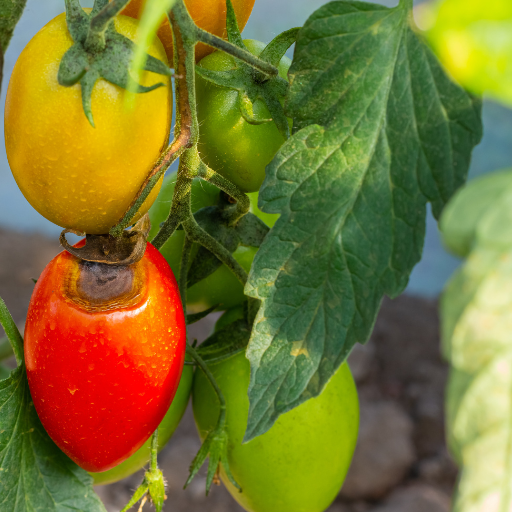
A common way to recognize blossom end rot is through formation of a dark recessed area at the bottom of tomato fruit, which could result in significant losses if not controlled. The problem is that such issues are caused by calcium deficiency in the developing fruit because soil moisture fluctuates. There are essential technical parameters to consider, such as soil pH and calcium content. Tomato plants thrive when the soil pH is between 6.0 and 6.5. Soil tests can help determine if enough calcium is available as it usually requires levels above 1000 mg/kg.
The best way to deal with blossom end rot would be through providing constant water supply that will ensure even moisture content in the soil; hence prevent sporadic uptake of calcium within its cells. Alternatively, one can apply gypsum or use calcium nitrate as a foliar spray for calcium supplementation purposes. No fertilizers should be used high in nitrogen since they might inhibit its absorption by the plant’s roots . It’s necessary to confirm whether there is any shortage of calcium in the ground before applying any treatments to avoid excess application and nutrient imbalance.
Role of Epsom Salt in Preventing Blossom End Rot
Magnesium sulfate commonly referred to as Epsom salt does not really cure blossom end rot disease contrary to popular belief.The cause should be seen more as lack of Calcium than being short on sulfur or magnesium.Besides, application of Epsom salt does not solve this problem.In fact it may increase magnesium levels excessively thereby interfering with Calcium uptake.Scientific reports from agricultural studies suggest that achieving right balance between Ca and Mg in soils helps reduce nutrient competition.Excessive magnesium levels usually lead to unfavorable ratio between Ca and Mg that should usually range from 3:1 to 6:1 hence impeding Ca uptake.Caution should be taken when using information from current research or authoritative sources like university agricultural extensions since gypsum or calcium nitrate additions may not be the only best ways of ensuring soil calcium is adequate and consistent soil moisture levels are maintained for protection against blossom end rot.
What is the best way to use Epsom salt?
There are specific guidelines that one must follow when applying Epsom salt to get effective results. For a general usage, dissolve one tablespoon of Epsom salt in a gallon of water and water your plants with this solution once every month. Magnesium levels can be boosted for tomatoes, peppers and other vegetables using the same approach. Besides, in the garden, it can also be sprinkled at a rate of 1 tablespoon per square foot over the soil followed by thorough watering to improve its absorption-ability. On the other hand, as foliar spray mix one tablespoon per one gallon of water and directly apply it on leaves using a sprayer. This should be done very early in the morning or late evening to avoid burning leaves. Nevertheless it is always important to do a soil test prior adding any supplement thus ensuring that actually Epsom salts are required and helpful for your specific soil conditions and plant needs.
Can Epsom Salt Help with Tomato Plant Nutrient Deficiency?
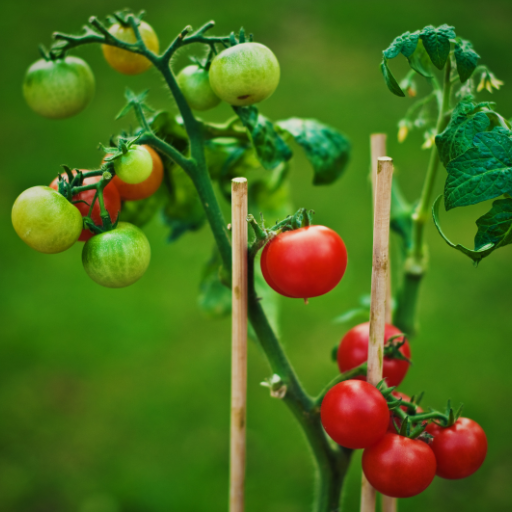
Epsom salt, which is a type of magnesium sulfate, is useful in the treatment of magnesium deficiency in tomato plants. Magnesium is an important element for photosynthesis and its absence can be associated with interveinal chlorosis where leaves turn yellow with green veins. Although Epsom salt can correct magnesium deficiency, it does not correct nitrogen deficiencies or any other essential nutrient like phosphorous and potassium. Therefore, it should only form part of a comprehensive nutrient management plan. Furthermore, one should undertake soil test before application to know if Epsom salt is needed because indiscriminate application can further disturb the soil nutrient ratios. To use it as a foliar spray, apply directly into the ground, or water using Epsom salt solution are some of the recommendations provided but only when best practices have been considered.
Major Nutrient Deficiencies in Tomato Plants
Among other nutrients’ deficiency cases commonly reported among tomato plants include nitrogen shortage. Leaves become pale yellow as plant growth becomes stunted leading to chlorosis. The most recommended step towards achieving this would be to apply a balanced fertilizer that has more nitrogen content, such as a 10-5-5 NPK ratio, so as to obtain necessary vegetative growth nutrients for the soil.
In case there is phosphorus lack, there will be dark green or purplish colors appearing on under surface of leaves and root retardation. This may be corrected through using bone meal or any fertilizer rich in phosphorus such as 0-45-0 NPK ratio fertilizers among others. It should however be noted that they need to be worked well into the soil near the roots to facilitate their uptake.
On the other hand, potassium insufficiency will result in brown edges curling and weak plant structure overall in an affected one-leaf individual. Dealing with this situation involves applying potassium-based fertilizers like potassium sulfate (0-0-50) or synthetic alternatives of 10-0-20. Potassium is vital for fruit development and enhances plant stress resistance.
In all these cases, accurate application based on soil test results ensures optimum nutrient balance while avoiding potential toxicity as a result of over-fertilization.
How Epsom Salt Deals with Magnesium Deficiency
Epsom salt, scientifically known as magnesium sulfate (MgSO4), is a good way to treat magnesium deficiency in tomato plants. Magnesium is a significant element that aids in photosynthesis as it forms the main part of the chlorophyll molecule. Magnesium shortage often leads to interveinal chlorosis that causes yellowing between leaf veins but leaves green.
Magnesium can be supplied instantly by using Epsom salt. The recommended application rate is usually 1 tablespoonful of Epsom salt per gallon of water. This solution can be applied directly to the soil or as a foliar spray. When applying in soil, the base of the tomato plant must get watered so that the magnesium can reach down to the roots. On the other hand, when spraying using leaves, make sure that you allow them to absorb more quickly by spraying on them.
To avoid excessive amounts and subsequent disruptions in soil’s other key nutrients’ equilibrium one must follow specific instructions during its usage; routine checking saves one from overdosing risks and related complications such as toxicities. Plants become stronger and produce higher yields by incorporating Epsom salt within a broader nutrient management strategy.
Comparing Epsom Salt with Other Fertilizers
Several important differences exist between Epsom salt and other fertilizers based on their composition, methods of application, and influence on plant growth. Conventional nitrogen-phosphorus-potassium (N-P-K) fertilizers contain a wide range of essential nutrients, whereas Epsom salt just provides magnesium and sulfur.
One place to start otherwise is by using organic compost, which has more complete nutrient profiles including micronutrients and beneficial soil microorganisms that generally foster soil health. However, compositional nutrient levels are generally low as well as being source variable necessitating higher amounts of applicant to achieve the same level of magnesium as that found in Epsom salt.
Inorganic fertilizers such as ammonium sulfate [(NH4)2SO4] and potassium magnesium sulfate [K2SO4•(MgSO4)2] can also be used effectively for this purpose. Ammonium sulfate contains 21% nitrogen by weight with an N-P-K ratio of 24-0-0 but may disrupt the balance if not managed properly because of its high nitrogen content. Potassium magnesium sulfate provides a balanced supply of potassium (approximately 22%) and magnesium (11%) along with 22% sulphur, making it a versatile option for addressing multiple nutrient deficiencies simultaneously.
The primary advantage of Epsom salts lies in their purity and targeted use, whereby magnesium deficiency symptoms are alleviated without the addition of other elements. They find immediate remedy through foliar sprays, which enable fast uptake due to visual deficiency corrections.
Ultimately, farmers should decide whether to use Epsom salts or alternative fertilizers based on specific crop needs, soil test results, and whole-farm nutrient management strategies. This will ensure accurate application rates that support healthy plant growth, resulting in enhanced yields.
What are the Potential Risks of Using Epsom Salt in the Garden?
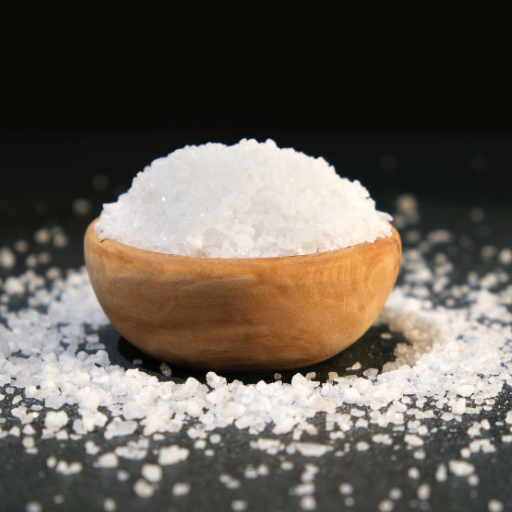
However, some risks are associated with using Epsom salt wrongly or applying it too much. Overusing Epsom Salt can lead to excessive magnesium buildup in soil, resulting in nutrient imbalance. One of the primary consequences is that it displaces critical nutrients such as calcium and potassium which are necessary for plant growth. Moreover, very high levels of magnesium prevent plants from absorbing other essential elements, eventually affecting their reproductive functions and growth. In addition to this, foliar application of Epsom salt may lead to leaf burn or damage if not properly diluted due to osmotic stress and high salt concentration. It is therefore important to use recommended rates and also carry out soil tests regularly so as to monitor nutrient levels and avert negative impacts.
Can Epsom Salt Harm Plants If Overused?
Yes, but only when over-applied.Depending on its application, an overdose could lead to excess magnesium in the soil that disrupts a delicate balance between plant-nutrient requirements necessary for healthy growth like calcium and potassium. High levels of magnesium interfere with the movement of these minerals into the roots, causing stunted growth, no fruit formation (as seen below) or poorly developed flowers, and yellowing leaves because of inadequate nutrients.
For foliar spray, Epsom salt is typically used at 1 tablespoon per gallon water.The rate can be even lower than one tablespoon per gallon water, depending on the desired osmotic pressure level. A typical recommendation for a single plant will range from 1-2 tablespoons.It is important not to pour undiluted Epsom salts onto plant tissues since this would increase salinity levels beyond tolerance limits leading to burning symptoms.
To support these technical guidelines, research has proven that a balanced soil pH range and constant monitoring through soil testing minimizes dangers associated with over-usage.Sufficient amounts should be maintained between 6.0 and 7.0 so that plants can efficiently take up nutrients. This will ensure that Epsom salt is applied correctly without posing danger to plants.
Conducting a Soil Test Before Using Epsom Salt
This step is very important because it enables one to determine whether there is a need for additional magnesium in the soil. In particular, a comprehensive soil test should include an analysis of the major macronutrients: nitrogen, phosphorus, potassium and magnesium that are required for plant growth. According to recommendations provided by testing labs, soils may sometimes lack adequate magnesium supplies. By following application instructions developed from this kind of information, gardeners can avoid over-fertilization which would cause problems like nutrient imbalances and poor growth. Proper timing of regular soil testing such as once every year helps maintain optimal soil conditions necessary for vigorous and healthy plants.
Reference sources
Frequently Asked Questions (FAQs)
Q: What is Epsom Salt and why is it good for tomatoes?
A: Epsom Salt, also known as magnesium sulfate, is beneficial for tomatoes because it helps increase chlorophyll production and improves nutrient uptake including that of essential nutrients like nitrogen and phosphorus necessary for healthy growth.
Q: How do I use Epsom Salt in my vegetable garden?
A: To use Epsom Salt in your vegetable garden, dissolve one tablespoon of Epsom Salt per gallon of water and water your tomato and pepper plants with this solution. You can also sprinkle Epsom Salt directly around the base of the plant.
Q: How often should I apply Epsom Salt to my tomato plants?
A: Application frequency depends on your soil conditions, but generally, apply Epsom Salt every two to four weeks during the growing season to ensure your plants get the magnesium they need for optimal growth.
Q: Can Epsom Salt help with pest control on tomatoes?
A: While Epsom Salt is not directly used for pest control, healthier plants resulting from properly balanced nutrients are less susceptible to pest infestations.
Q: Is Epsom Salt good for other vegetables besides tomatoes?
A: Yes, Epsom Salt is also good for other vegetables like pepper plants. It can be used to help improve leaf coloration and overall plant health by providing essential micronutrients.
Q: Can I use Epsom Salt when transplanting tomato seedlings?
A: Yes, when transplanting tomato seedlings, add one to two tablespoons of Epsom Salt into the soil around the base of the plant to help reduce transplant shock and promote root establishment.
Q: What does a magnesium deficiency look like in tomato plants?
A: A magnesium deficiency in tomato plants presents as yellowing between the leaf veins while the veins themselves remain green. Addressing this with a solution of Epsom Salt can help correct the deficiency.
Q: How does Epsom Salt affect plants’ uptake of other nutrients?
A: Epsom Salt can enhance the uptake of other nutrients, such as nitrogen and phosphorus, by ensuring optimal levels of magnesium and sulfur, which are essential for various cellular processes and the formation of cell walls.
Q: How much Epsom Salt should I use for seed starting tomato seeds?
A: When starting tomato seeds, you can mix Epsom Salt into your seed-starting soil. Use about a tablespoon of Epsom Salt per gallon of water to help with germination and early root development.
Q: Why do epsom salts make plants look healthier?
A: Epsom Salts help plants look healthier by providing essential nutrients like magnesium and sulfur, which are crucial for producing chlorophyll and enabling efficient nutrient uptake, leading to robust foliage and a stronger plant overall.






